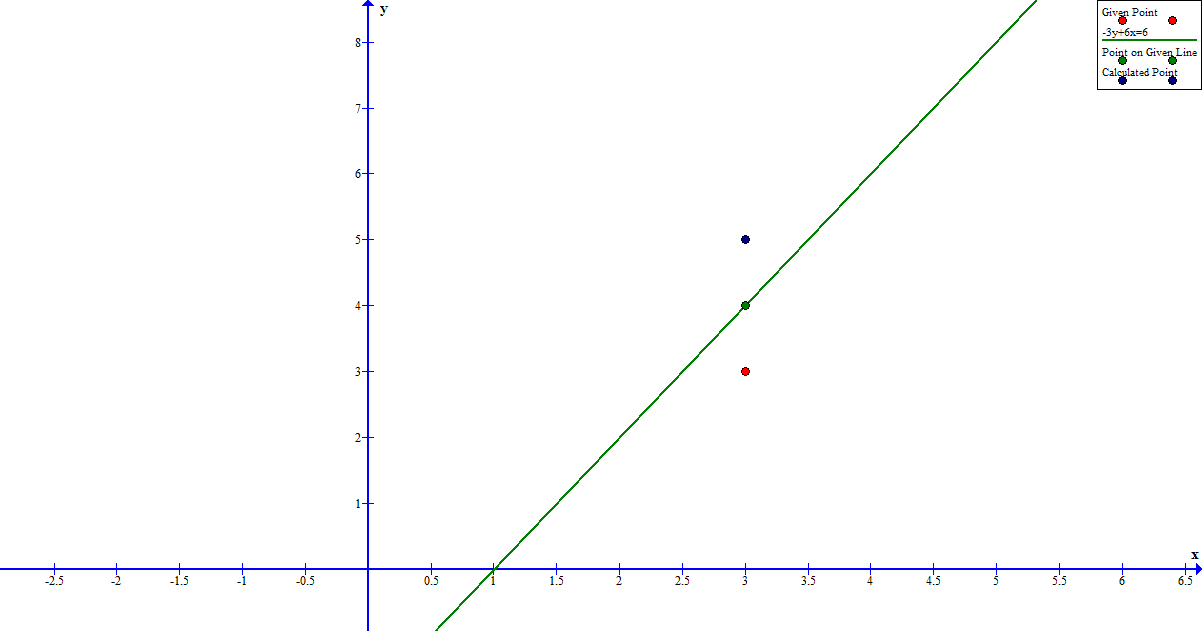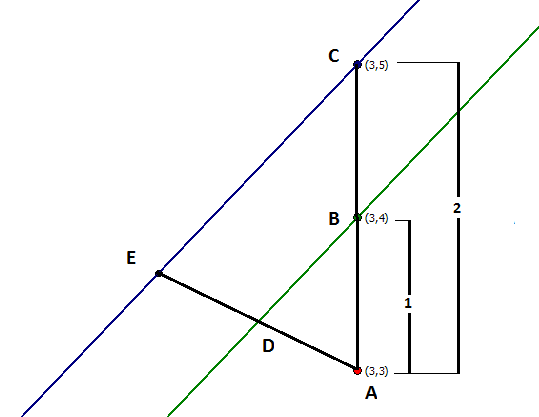A line segment is bisected by a line with the equation # - 3 y + 6 x = 6 #. If one end of the line segment is at #( 3 , 3 )#, where is the other end?
1 Answer
The other end could be any point on the line
Explanation:
For convenience, I will rearrange the given equation
as
Consider the vertical line through
Since
this vertical line will intersect
The distance between
The point
Therefore
Therefore one possible endpoint would be at

~~~~~~~~~~~~~~~~~~~~~~~~~~~~~~~~~~~~~~~~~~~~~~~~~~~~~~~~~
Perhaps less obviously, any point on a line through
will also be a line segment endpoint bisected by the given equation.

From the image above we can see that for an arbitrary point
and since
(i.e. the given line is a bisector for
Since
the line parallel to it and through
and using the slope-point form:
Which can be simplified as
